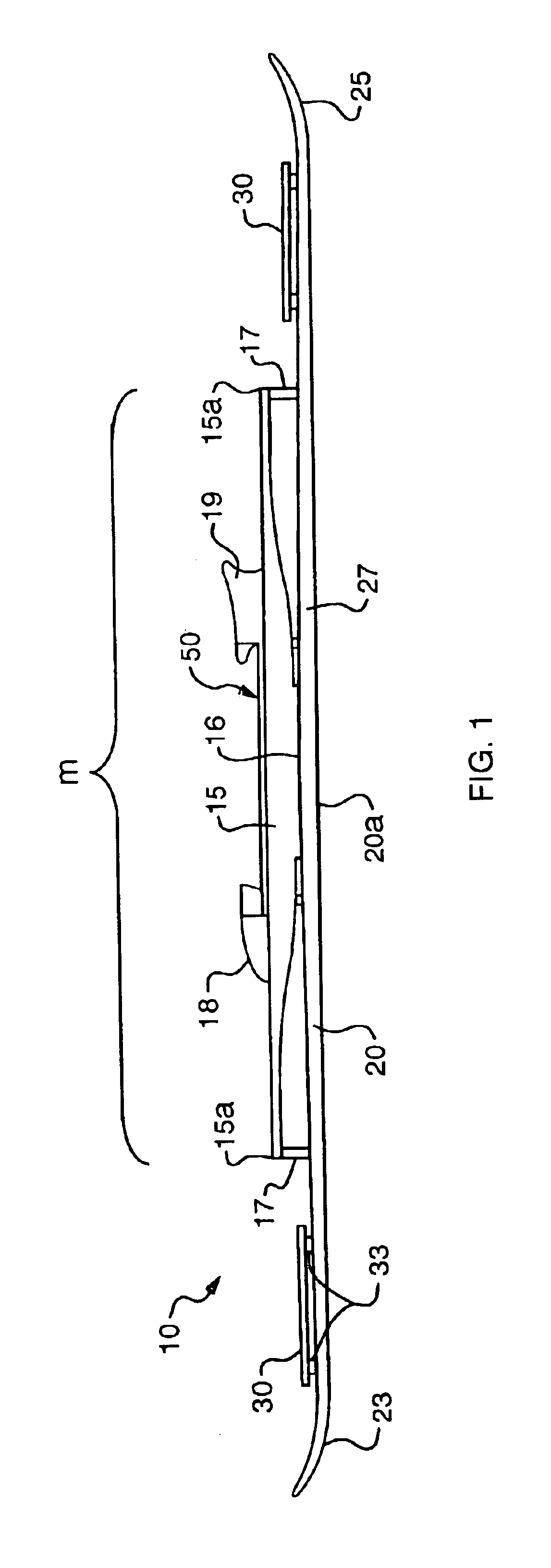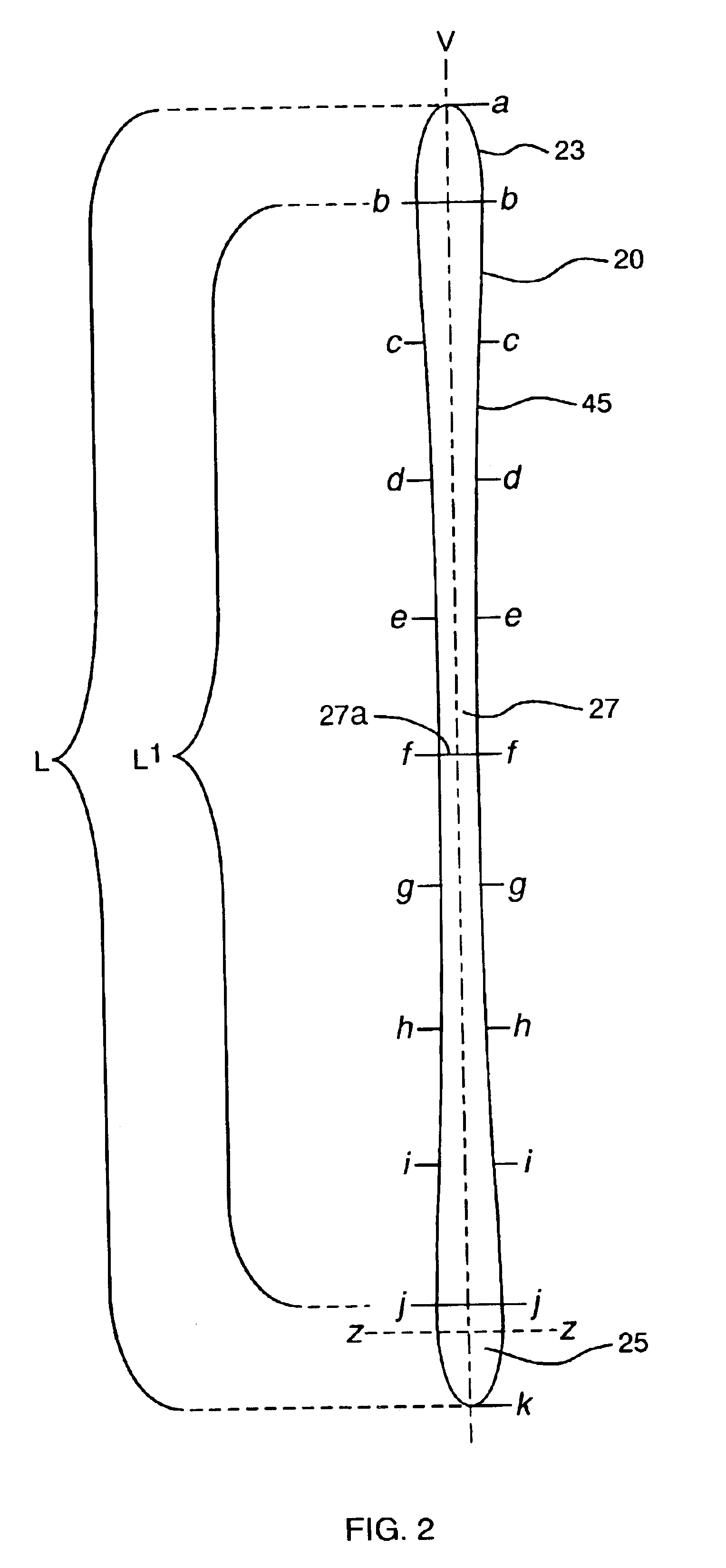Gliding skis
a technology of skis and skis, applied in the field of ski construction, can solve the problems of skier effectively losing graceful or controlled skidding requires delicate balance, and skier effectively loses control of direction and speed. , to achieve the effect of positive engagement with the ground surface, providing maneuverability and control
- Summary
- Abstract
- Description
- Claims
- Application Information
AI Technical Summary
Benefits of technology
Problems solved by technology
Method used
Image
Examples
Embodiment Construction
Referring now to the drawings, in which like reference numerals are used to refer to the same or similar elements, FIG. 1 shows a glider ski 10 of the invention. The glider ski 10 is one of a matched pair used for the relatively new skiing sport of glide-skiing, and the description herein should be interpreted to apply to the second ski in such a pair, except as noted. Typically, one glider ski 10 is equipped on each of a skier's feet using ski boots and bindings.
The glider ski 10 of the invention has increased turning ability and maneuverability as a result of improved flexibility achieved through the shape of the glider body 20 and additional components of the ski 10. The glider ski 10 has a bi-level design with a primary runner or glider body 20 defining a lower running surface 20a for contacting a skiing surface and a binding platform 15 for mounting a boot 40 above the glider body 20. Wings 30 are mounted above the level of the glider body 20 to provide a secondary contact edge...
PUM
 Login to View More
Login to View More Abstract
Description
Claims
Application Information
 Login to View More
Login to View More - R&D
- Intellectual Property
- Life Sciences
- Materials
- Tech Scout
- Unparalleled Data Quality
- Higher Quality Content
- 60% Fewer Hallucinations
Browse by: Latest US Patents, China's latest patents, Technical Efficacy Thesaurus, Application Domain, Technology Topic, Popular Technical Reports.
© 2025 PatSnap. All rights reserved.Legal|Privacy policy|Modern Slavery Act Transparency Statement|Sitemap|About US| Contact US: help@patsnap.com



